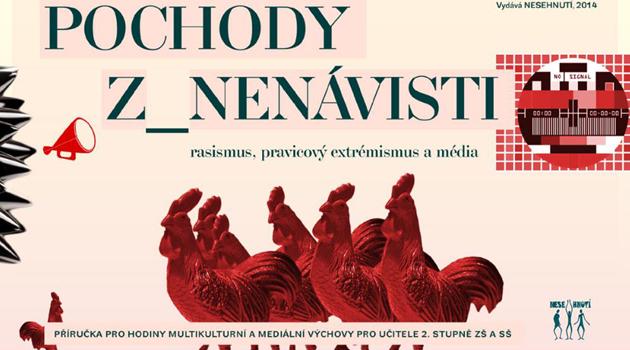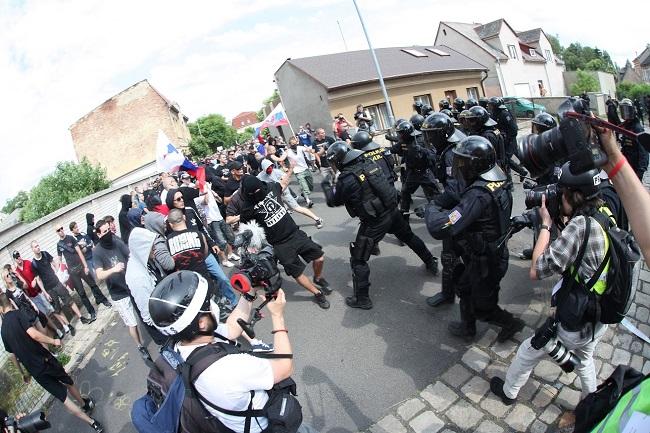The NESEHNUTÍ NGO has issued a new publication dedicated to the phenomenon of hate marches focusing on the role of the extreme right and the media in these events. What actually happened behind the scenes of the largest anti-Romani marches in the Czech Republic during 2013?
Do the media contribute to spreading hatred in society, and if so, how? How are reports from demonstrations "cooked up" in the kitchens of news outlets?
How is neo-Nazi rhetoric disseminated on social networks? Are the hate marches in the Czech Republic different from those in Germany?
The NGO has done its best to answer these and other questions in the publication, which is primarily intended for teachers of upper primary schoolchildren and high school students as an informational framework for discussing the phenomenon of hate marches as part of multicultural education or as case studies for classes on media. The publication is also recommended for anyone who wants to learn more about the marches.
The booklet describes the marches that have been monitored by the NGO and the events that led up to them. It includes a content analysis of online news reporting about the marches and an analysis of the logic of the media vocabulary of television news reporting about the marches by media sociologist Pavla Doboš, facilitating deeper insight into the issue of how the media frames hate marches.
An article by Petr Machálek, a PR expert, shows how similar events are "cooked" to produce news in practice and offers instructions on how to collaborate with the media. The booklet also includes a look under the lid of the neo-Nazi scene on social networks and a description of hate marches in Germany from the Berlin-based organization Apabiz, which collaborated on the project by performing parallel monitoring of hate marches in Germany.
This overview makes it possible to understand the phenomenon of these marches in a broader context and to identify common features in the dynamics of their rise and spread in both countries. It also shows how loose the causal relationship is between the convening of these marches in the Czech Republic and Romani people, even though the media frequently refer to such a relationship to explain (and often even to legitimize) the marches it reports on.

